Tag: Originals
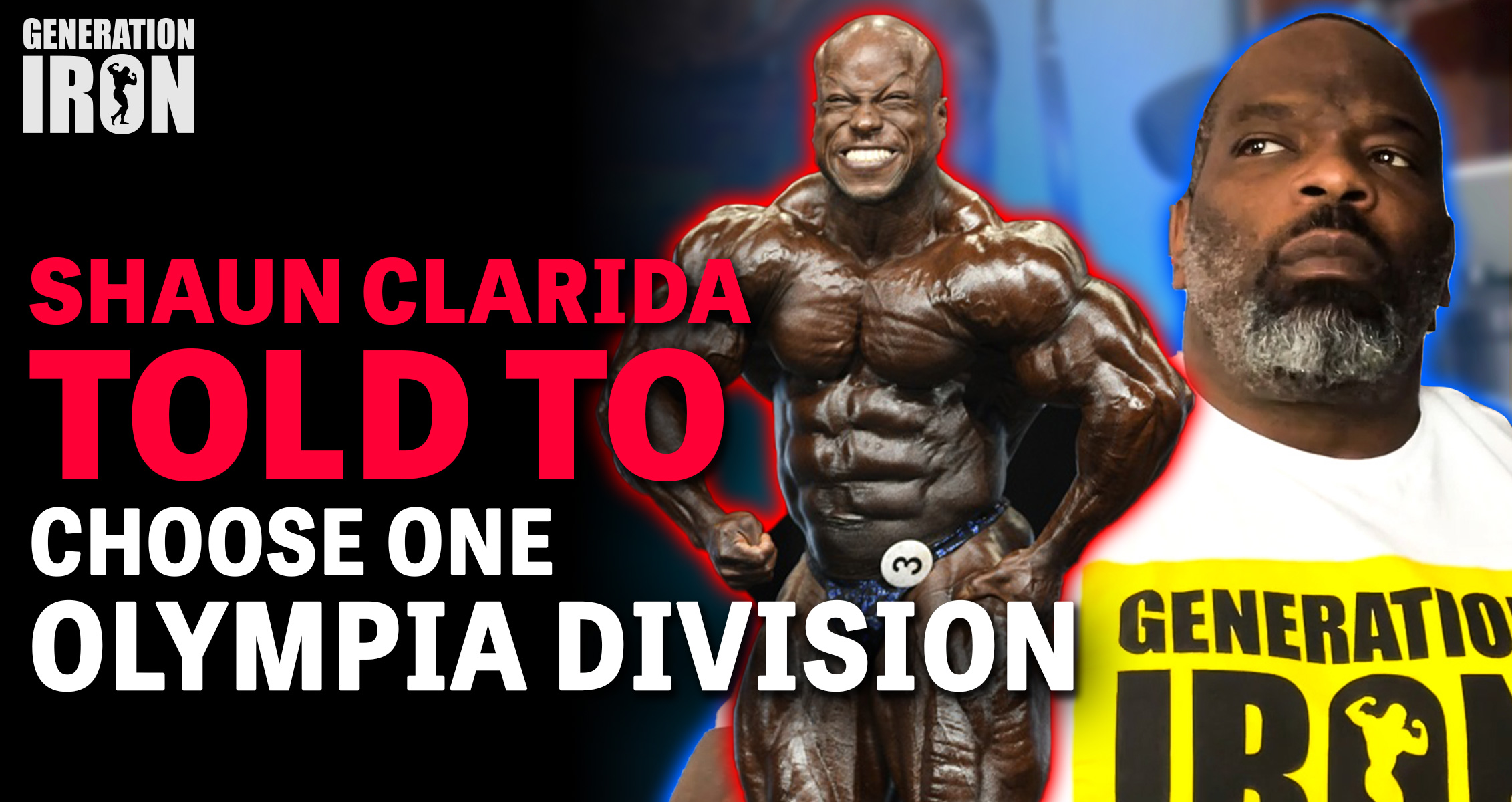
Hardcore Truth: Olympia Is Telling Shaun Clarida He Can Only Compete In One Division
[embedded content]
Johnnie O. Jackson connected with Shaun Clarida – who told him that currently he is being asked to only compete in one division at the Olympia.
Late last year, Shaun Clarida made headlines by winning a Men’s Open bodybuilding competition at the Legion Sports Fest Pro. With his win, he is now qualified to compete in both Men’s 212 and Men’s Open. Since then, Clarida has signaled that he desires to possibly compete in both divisions at Olympia 2022. As this is a rare occurance, he planned to speak further with the Olympia team to figure out his options. Since then we have heard little on this story. In our latest episode of Hardcore Truth, Johnnie O. Jackson gets an update from Shaun Clarida – learning that as of now, the Olympia is only letting him choose one division.
Every once in a while, there are rare moments that occur in the world of pro bodybuilding that require a deeper glance at the league rule books. Shaun Clarida qualifying for the Mr. Olympia in two divisions is one such occasion. It led both Clarida himself and fans to wonder if he could compete in two divisions at the Olympia concurrently. Seemingly, there would be no reason not to – other than his own personal preference to not have to compete double the amount in one weekend.
However, Johnnie O. Jackson reconnected with Shaun Clarida this week to get an update on his Men’s 212 vs Men’s Open Olympia plans. From what he was told by Clarida himself, it seems the Olympia is making him choose just one division to compete in. While no details were given as to why this is the case – it seems as if perhaps the double qualification might conflict with some lesser known guidelines for the Olympia weekend. Jackson also reached out directly to Dan Soloman for comment – who has yet to respond since the time of this writing and recording.
If we’re speculating, it seems that this might fall under some sort of technicality. Similar to the small uproar that transpired after it was revealed that Flex Lewis was not technically qualified for the Men’s Open Mr. Olympia this year. According to the Olympia team earlier this year, Lewis would either need to directly qualify or receive a special invite. As of now, he has yet to officially receive such an invite – though it seems inevitable this will happen.
However, Johnnie O. Jackson thinks that whatever guideline that is requiring Shaun Clarida to choose one division is foolish. Jackson points out that Clarida is not asking for a favor or a handout. He fair and square qualified for two different divisions. In Jackson’s mind, the only reason he should not be allowed to compete in both is if both events happened at the same exact time. But we know from past years that this is not the case.
Now is it a good idea for Shaun Clarida to split his energy into two divisions? That’s up for personal debate. But if Clarida desires to do so – he should not be held back since he earned both with his own effort. Jackson points out that in the past when the Master Olympia still existed (which might return, by the way), a bodybuilder was allowed to compete in both the Masters division and the Men’s Open division at the Olympia. So why can’t Clarida do the same?
Ultimately, things may change. While Shaun Clarida confirms that he is currently being asked by the Olympia to only choose one division – an exception might later be made as we get closer to the show. Much like how we assume Flex Lewis will eventually receive his official special invite. Since Dan Soloman has yet to respond back to Johnnie O. Jackson, we don’t have a definitive statement on the subject other than Clarida’s word. Time will tell how this unfolds.
Until then, what side of the decision to you fall on? Do you think it’s fair to only let Shaun Clarida compete in one Olympia division? Let us know in the video comments or on our social media channels! You can watch Johnnie O. Jackson’s full comments in the latest episode of Hardcore Truth above!
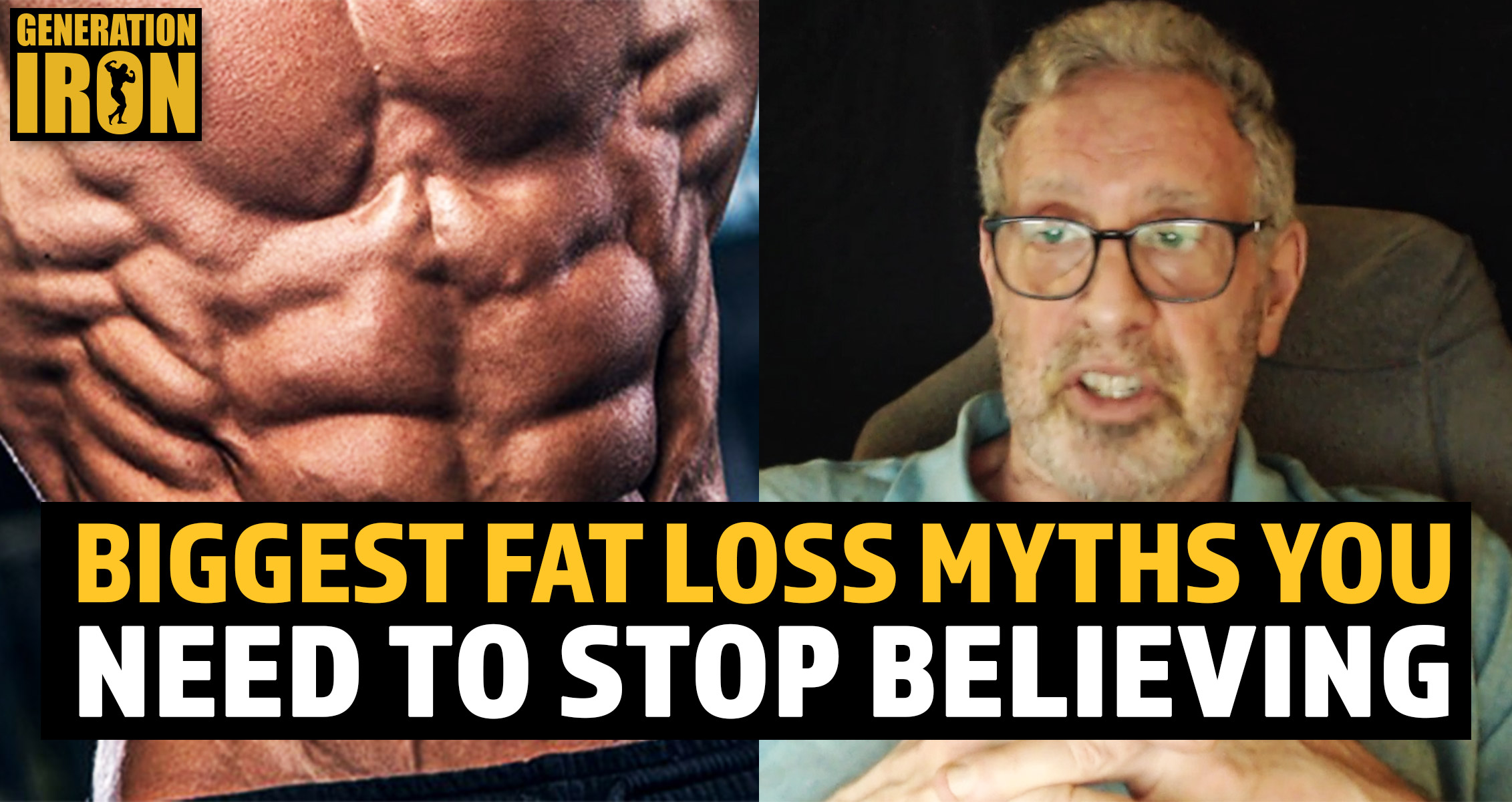
Straight Facts: Biggest Fat Loss Misconceptions & Mistakes
[embedded content]
Jerry Brainum gives the straight facts on the biggest myths in fat loss and how to avoid making these frustrating fat burning mistakes.
For many people across the world, weight loss is a nightmare. There is an entire industry and culture behind weight loss. Companies that attempt to sell you the next big trick to lose weight without the stress. Many are scams. Some are based in truth but oversold and oversimplified. But the mere existence of the fat loss industry showcases one painful truth – it is hard to lose weight for many individuals across the world. In our latest episode of Straight Facts, Jerry Brainum debunks the biggest fat loss myths and shares tips on how to avoid these big fat burning mistakes.
If you are someone who has either struggled to lose weight or focused on some sort of weight loss diet – you’ve likely heard all sorts of advice before. To simply it, there seem to be two schools of thought. One is the many complicated sciences and tricks into losing weight. These include fat loss products, nuanced diet trends, and sold nutrition programs like the Atkins diet or Weight Watchers.
The other school of thought boils it down to the simple basics. These people often say dieting is easy. Just eat less calories than your resting metabolic rate and you’ll drop fat. Easy, right? All you need is the will power to make it happen. It shouldn’t be complicated.
But the reality falls somewhere between these two extremes. The hard part is weeding through the crap to find out real helpful advice. That’s why we turned to Jerry Brainum to help debunk the biggest fat loss misconceptions and share tips using studies and facts on how to lose weight. Let’s jump into it with this overview of the biggest fat loss misconceptions.
1. Not all calories are created equal
One of the most basic strategies regarding weight loss is to consume less calories. While this is true in general, it’s also misleading. Different calorie sources go down different metabolic pathways.
Jerry Brainum explains that studies have long concluded that dietary fat contains more calories per gram than other nutrient sources. This has long lead to the believe that you should cut dietary fat for weight loss. But this is misleading.
In basic terms, Jerry Brainum uses the keto diet as an example. This diet asks you to cut carbs and replace with large amounts of dietary fat. The diet works (when done correctly). But based on pure calories alone this should not be the case due to the hight amount of calories per gram in dietary fat. This is just an anecdotal example of how not all calories are created equal.
In the video above, Jerry Brainum goes into more detail using studies that showcase the science behind this concept and why weight loss attached to calorie counting is more complicated than it seems.
2. Weight loss is not linear
There is also a generalized blanket statement made about fat loss. That if you cut 500 calories per day you’ll lose a pound per week and expand upon this linearly (1000 calories will lose you 2 pounds etc). This is not always true.
Jerry Brainum explains the concept of diet plateaus. This often happens after a few weeks of dieting successfully. A diet plateau happens often when your body realizes that your consuming less calories. Often times, cutting calories leads to bringing your daily caloric levels below what your body needs to function.
This is when your body goes into “starvation mode.” It begins pulling energy from other sources in your body, your metabolism slows down, and suddenly you stop losing weight.
3. Fat burner supplements will not directly burn fat
Fat burner supplements often advertise as miracle products that will help you lose fat without having to do anything else. This is not true. Studies have shown that fat burners don’t directly burn or oxidize fat. They help mobilize fat. So you often need to have a consistent exercise routine to make these products effective.
Related: Check out our review guide for the best Fat Burner supplements of 2022
4. Willpower is not the only factor in fat loss
There are those who believe that an overweight person simply has no willpower to eat healthy. This is not always true. Jerry Brainum explains that there are people with genetic disorders that will make it much more challenging to lose weight. For example, if you have low thyroid (hyperthyroidism) – you burn calories much slower than the average person. Even depression can lead to biological changes that slow down fat loss.
5. Exercise alone is not a good fat loss strategy
There are those who will jump on a bike or run for hours on end in the hopes of burning off the fat they ate for the day. This is not an effective strategy to lose weight. Jerry Brainum explains that over-exercising with cardio or aerobics will eventually lead to cannibalizing your muscles rather than burning fat.
On top of this, exercise is a much less effective way to burn fat than simply having a healthy or restricted diet. You would be surprised at how few calories an hour of running really burns.
6. Dietary fat does not always make you fat
This relates somewhat to item number one on this list. Especially in the past, dietary fat was seen as the enemy for weight loss. But this is not 100% true. There are many other nutrients such as carbohydrates (especially additive sugar) that contribute far more to gaining fat. As we mentioned above, diets like the keto diet are very effective in helping with fat loss and often involve a large amount of dietary fat.
7. Does healthy obesity exist?
This one is more controversial and currently being studied in more detail. For most of our modern existence, being obese was seen as being unhealthy. Jerry Brainum points out that many studies have shown that obesity leads directly to certain diseases (like type 2 diabetes) and ailments.
However, the culture is starting to shift into discussing the concept of healthy obesity. This comes from studies that show certain people who are categorized as obese have completely healthy bloodwork.
Jerry Bainum goes on to explain that this is currently a very controversial subject. Some doctors and scientists believe that, while an obese person can be healthy for some time, they will eventually suffer some sort of ailment in the long term. These ailments are harder to directly correlate due to the vast amount of other factors that may contribute. Even so, in today’s shifting culture, there has been a movement to promote “healthy fat” physiques.
The truth is this will likely require more studying before anything can be 100% concluded.
Wrap up
Jerry Brainum goes into far more detail and even more misconceptions and myths than we can discuss in this article. That’s why you should make sure to watch our latest episode of Straight Facts in full to become more informed on the biggest fat loss mistakes and how they can help you improve cutting fat. You can check it out above.
And don’t forget to check back in every Wednesday for new episodes of Straight Facts every week!
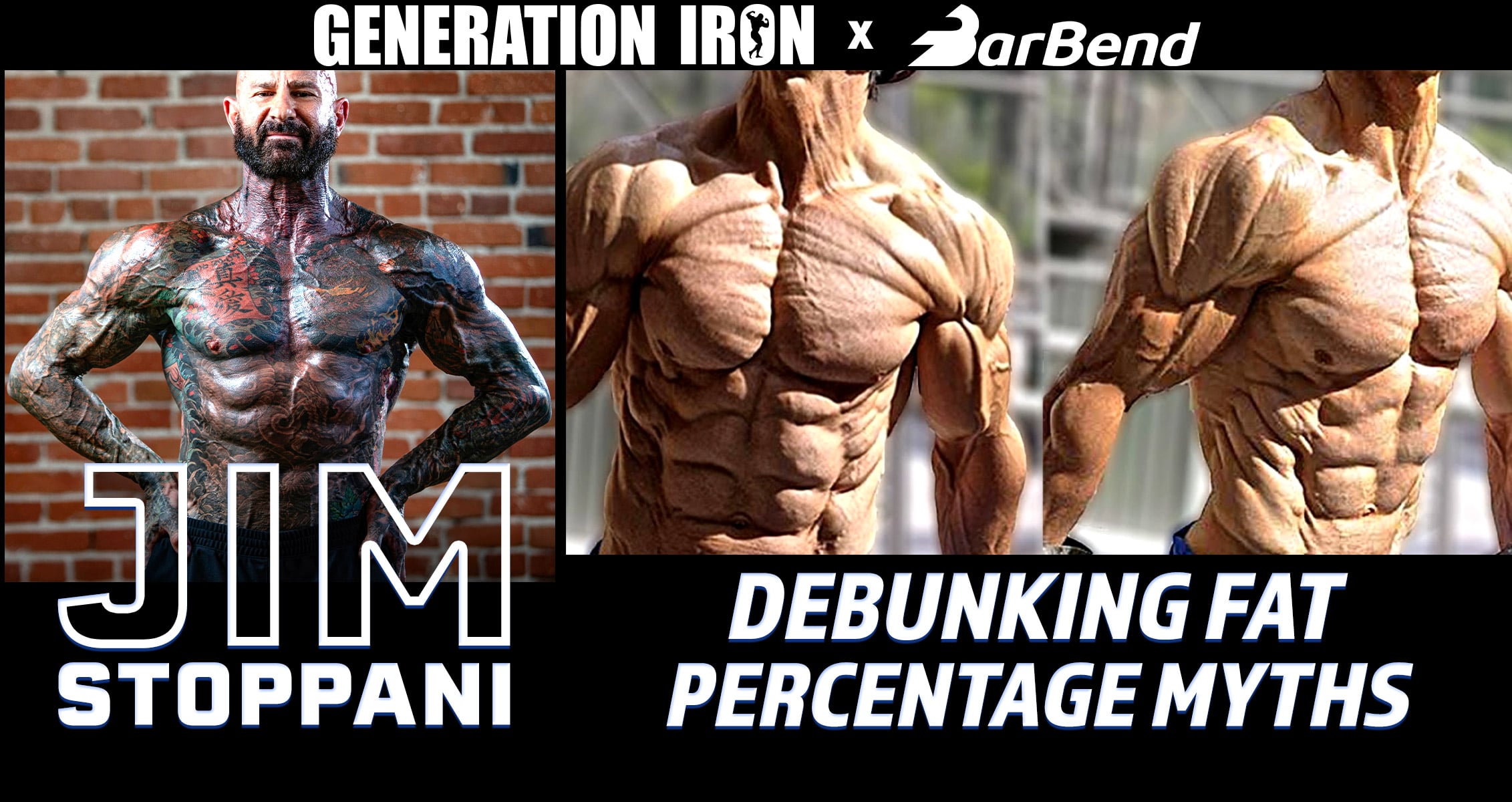
Jim Stoppani Debunks The Biggest Body Fat Percentage Myths
[embedded content]
Jim Stoppani explains body fat percentage realities for athletes vs average individuals.
Ronnie Coleman once stated that during his prime he held under 1% body fat. Many accused this as being a lie. That it’s impossible to bring your body fat percentage lower than three or four percent due to vital organ fats your body needs to function. But in the world of extremes such as bodybuilding, there are athletes who truly aim to reach these kind of goals. Is it really possible? In our latest GI Exclusive interview partnered with Barbend, Jim Stoppani debunks the biggest myths about body fat percentage and the real possibilities (and dangers) of extreme fat loss.
In the world of bodybuilding, getting as conditioned and shredded as possible is always the ultimate goal when stepping on stage. The hard work put into sculpting a physique can be shown best without soft fat hiding the “goods” so to speak. But not only is the general act of “cutting” for a competition dangerous, having unrealistic goals of extreme low body fat percentages is unhealthy as well. As an athlete, there’s nothing wrong with wanting to look conditioned – but where is the real line? How low can you go and stay healthy?
And even when opening up to the general public – the expectations on how a person “should” look has led to a variety of eating disorders and body dysmorphia. That’s why we connected with Jim Stoppani to talk about the real facts behind body fat percentage, what’s realistic and what myths we can debunk here and now. Let’s jump into it.
What is a normal body fat percentage range?
Body fat percentage is the relative amount of fat you are holding on your body compared to your overall weight and size. That’s why we speak in terms of percentages rather than specific units of measurements. Depending on your height and overall weight – the ideal numbers can be different.
So when it comes specifically to body fat percentage – the healthy amount is often much higher than individuals seem to realize. Jim Stoppani explains that the average healthy range of body fat tends to be somewhere between 15-20%. These values shift depending on if you are a man or a woman. Women tend to carry more body fat genetically.
Jim Stoppani, however, land squarely at 5% body fat typically. This is due to his consistent and fitness focused lifestyle. As you can see, that’s a big gap from the typical healthy average. And it’s this kind of gap that can lead an average non-athlete individual to expect a lower number. Jim Stoppani wants to clear the air for those who focus to heavily on their body fat percentage. If you are in a 15-20% range, don’t worry. You’re not fat. And it’s not a sign, generally, that you are unhealthy.
Could Ronnie Coleman’s below 1% body fat claims be true?
It’s impossible to know whether or not Ronnie Coleman’s past statement about being below 1% is true. However, it is possible despite what many would have you believe. Typically, it’s understood that an athlete cannot go below 3-4% body fat due to the vital fat your organs need to function. This is true. But that doesn’t mean there isn’t a way to bring that percentage lower.
Jim Stoppani explains that Ronnie Coleman, theoretically, could have gotten his body fat down to below 1%. However, to do that he would have had to turn to some serious drugs. No only that, but the very act of burning such vital fat is extremely unhealthy and dangerous. So yes, it is possible. But no, you shouldn’t aim for such a goal.
Jim Stoppani can’t speak for Ronnie Coleman, but he does have a fair understanding about pro bodybuilding. He reminds us that it’s an extreme sport and we’ve seen athletes go to extreme measures to succeed. Ronnie himself shattered the barrier of just how massive and shredded a bodybuilder could be on stage. So it’s not beyond reason to think he would have pushed hard to some dangerous areas to bring his body fat down extremely low as well.
Ultimately, this is all speculation. We can’t determine the validity or the actions of Ronnie Coleman regarding his body fat claims. But it is important to know the truth. While it’s not naturally possible, there are ill-advised ways to bring your body fat below 3%.
When should you worry about having too high body fat?
So how much fat is too much fat? When should you start actually worrying about that percentage number as an average non-athlete individual? Jim Stoppani explains that you should only be worried if you are over 30% body fat. That’s when you are considered obese. Anything below that should not be a worry from a general health standpoint. Unless you are trying desperately to look muscular and shredded – don’t get too bent out of shape over a 16% or 18% body fat level.
Wrap Up
Whether you are a competitive bodybuilder or just a fan, it’s easy to get sucked into the alternate reality of body fat percentages in bodybuilding. However, it’s important to remember that there is a wide difference between average healthy body fat percentages and what pro athletes do (and risk) to be the best in the world.
You can watch Jim Stoppani explain in detail, and debunk some common misconceptions, in our latest GI Exclusive interview segment above.
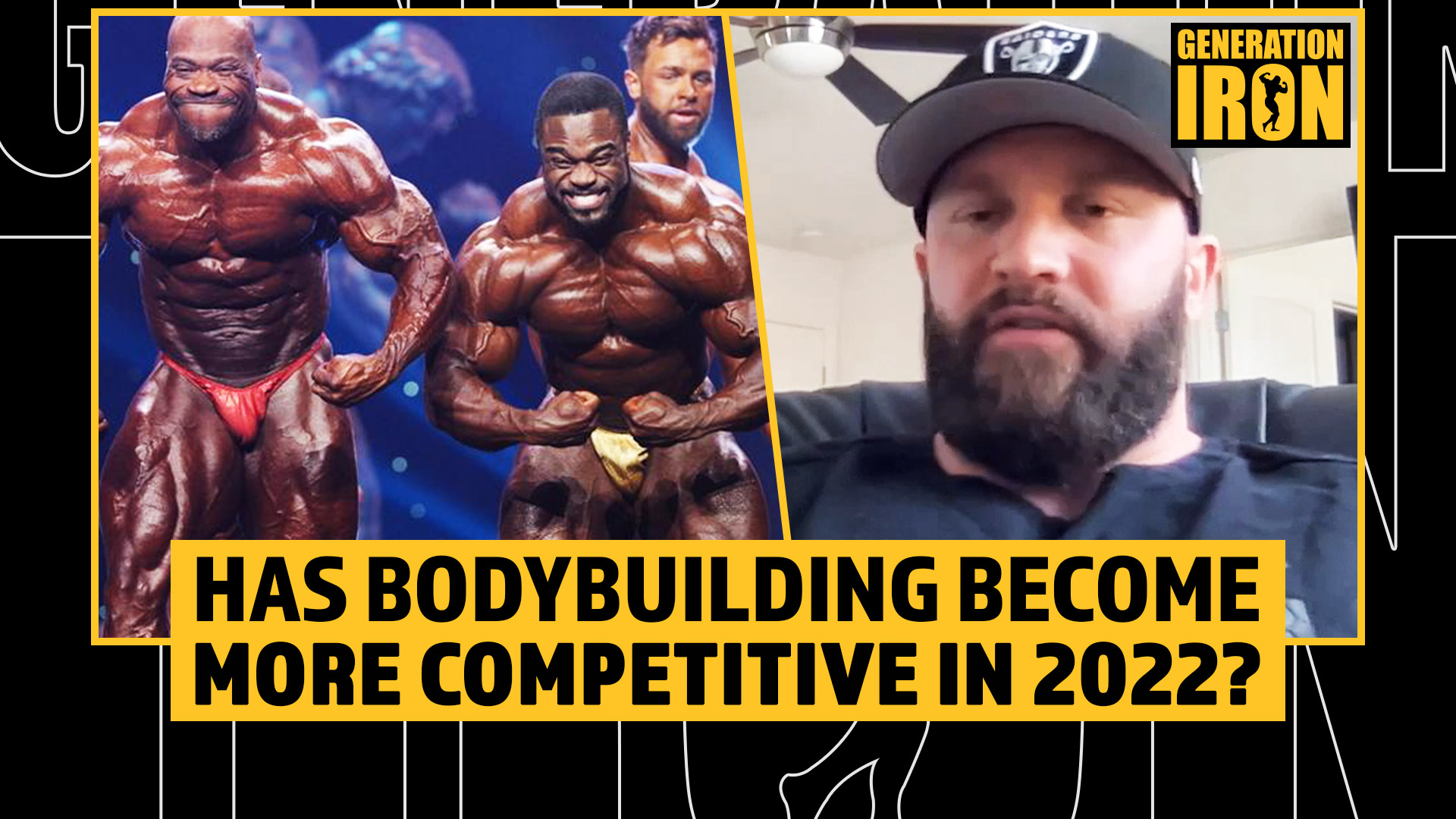
Stanimal Answers: Has Pro Bodybuilding Become More Competitive In Recent Years?
[embedded content]
Stanimal De Longeaux reflects on the current crop of talent competing in pro bodybuilding and if the sport has become more competitive.
There was a time not too long ago where fans of pro bodybuilding felt that surprise was missing from the sport. Reigning champions maintained such talent and power – that it was easy to predict who would win big shows like the Arnold Classic or Mr. Olympia. Flex Lewis won every show he competed in. So did Phil Heath. Their reign felt impossible to overcome. Since then something changed – and now the outcomes of pro bodybuilding competitions have become more unpredictable. There have been many upsets and the Mr. Olympia title has seen four different champions over the past five years. Has the talent pool become more even and competitive? In our latest GI Exclusive, Stanimal De Longeaux compares the sport when he started vs today and whether or not it’s truly become more competitive.
There’s a big reason why the Classic Physique division has garnered so much attention for such a relatively young category. Yes, the personalities and physiques on display are top notch. But more than that, the level of competition has been thrilling and truly unpredictable. With exception of Chris Bumstead in recent years – it’s nearly anyones game at every major Classic Physique competition. In fact, it’s become so popular that the Boston Pro 2022 ended the night with Classic Physique rather than the typical Men’s Open.
This is something Stanimal De Longeaux is very well aware of. He’s right there in the middle of it as a competitor. Suddenly more doors are open as he continues to improve and perfect his physique.
Stanimal has also noticed that it seems this level of competition is starting to make its way into Men’s Open as well. Big Ramy is starting to get a foothold with two wins in a row – but we’ve had four different champions in quick succession at the Mr. Olympia. The old guard are slowly stepping down and young talented competitors are finally coming into their own. The patterns have shifted. things have become unpredictable.
While that might not be the reason Stanimal moved from Classic Physique to Men’s Open – we can assume it certainly was a factor. As Stanimal continues to discover what division is a best fit for his genetic frame, he is finding that there is no longer single guaranteed repeat champions in either Classic Physique or Men’s Open.
On one hand, this leads to more opportunity. There is no longer a Phil Heath who will shut out the competition and change the battle for everyone to see who gets second place. However, this increased competition simply means the battle becomes more barbaric – so to speak. There are more close calls, more hungry competitors with an actual shot for first place. It’s thrilling to see on stage – and it helps the athletes push each other to great new heights.
Stanimal believes that, for Classic Physique, this is natural for a new division. The first few years were athletes learning what defines the division. Now that it’s grown from its infancy – we are still with that first generation of athletes. Nothing is fully set in stone
On the other hand, Stanimal notes that the Men’s Open division is simply going through a transitionary period that is finally blooming. Gone are the yesteryears of Phil Heath, Kai Greene, and Dexter Jackson. New names such as Nick Walker, Hunter Labrada, and Hadi Choopan are finally coming into their own. It’s an exciting time and leading to more heated battles on stage. This is great not only for the athletes but also for the fans.
Where will Stanimal’s place be during this competitive time? During our interview, he explains that he’s started working with a new coach for his off season prep. He wants to take his health and his physique to the next level and enter into the Men’s Open division as a true threat among the new generation of athletes. Only time will tell how he will fair in such a hungry crop of athletes.
You can watch Stanimal De Longeaux discuss the growing competitive nature of modern bodybuilding and his new contest prep plans for Men’s Open in our latest GI Exclusive interview segment above.
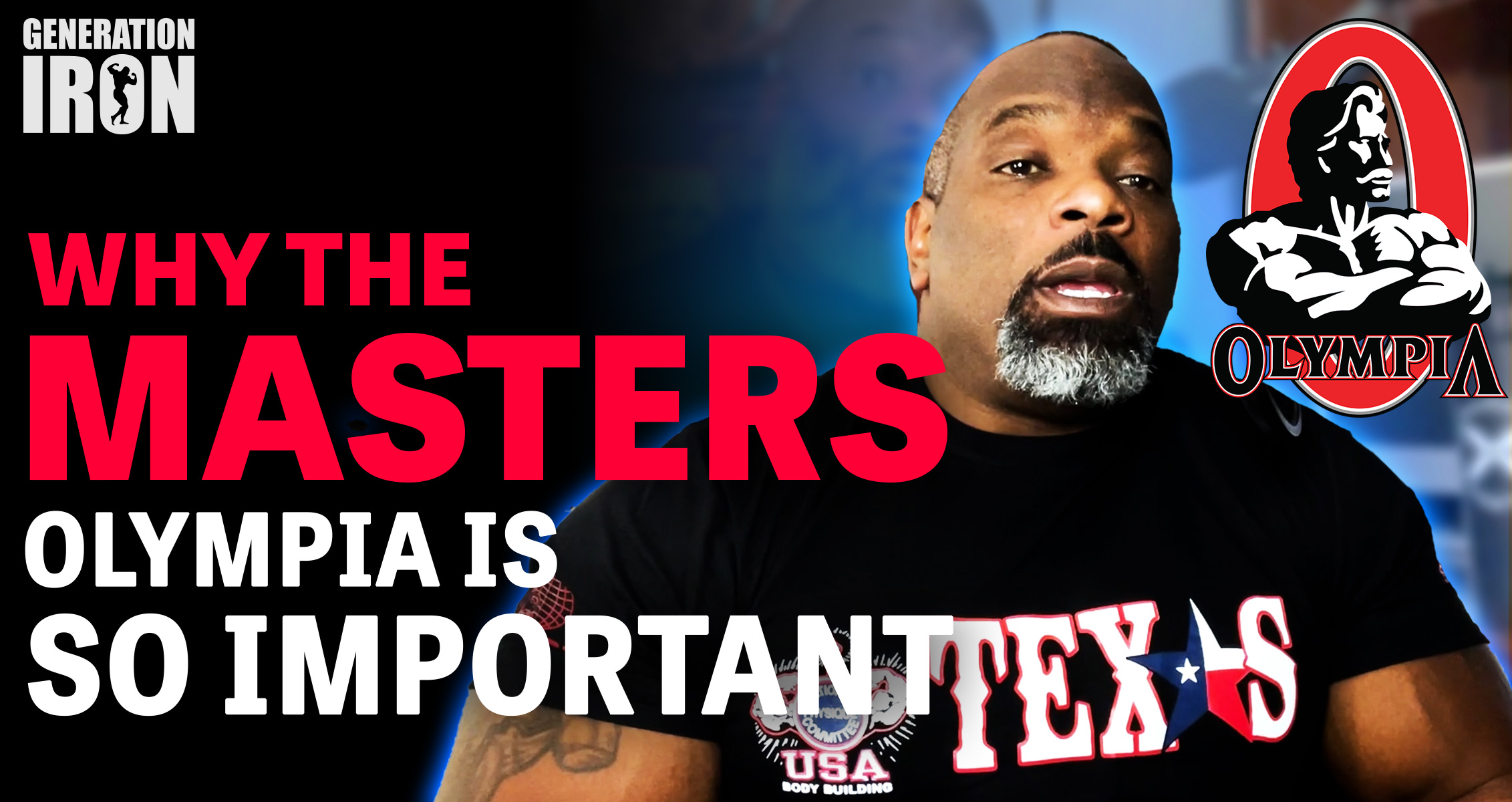
Hardcore Truth With Johnnie O. Jackson: Why The Masters Olympia Is So Important
[embedded content]
Johnnie O. Jackson discusses his excitement for the possible return of the Masters Olympia, whether he will compete, and why the competition is so important for the sport.
Jake Wood made headlines in February 2022, when he confirmed that he is working on brining back the Masters Olympia to the IFBB Pro league. The Masters Olympia ran from 1994 to 2003 and then a brief return in 2012 with Dexter Jackson earning the final big win for the competition. Since then, the Masters Olympia has vanished. Now it seems that 2023 will bring back the prestigious competition – and Johnnie O. Jackson couldn’t be happier to hear the news. In our latest episode of Hardcore Truth, Johnnie O. Jackson explains why the Masters Olympia return is a big deal – and the true importance of the competition for the sport.
When Dexter Jackson continued to compete in the Mr. Olympia after his 2012 Masters Olympia win, it seemed to almost prove that the Masters Olympia was unnecessary. Jackson was able to continue to hold step against his fellow athletes and earn top 5 placings in the Mr. Olympia. If someone his age could place so high in the main event, what need is there for the Masters Olympia at all?
The fact that the Masters Olympia has been absent from the IFBB Pro league for so many years seems to confirm that line of thinking. That is, until it returns in 2023 (according to Jake Wood’s hopes during the admittedly still preliminary planning stages). But Johnnie O. Jackson believes that it shouldn’t have ever left.
Why The Masters Olympia Is So Important
During this week’s episode of Hardcore Truth, you can hear the excitement in Johnnie O. Jackson’s voice as he talks about the return of the Masters Olympia. To him, it’s an important part of the IFBB Pro. Why? Because it can be a vital force for the longevity of pro bodybuilders.
Not only does it provide a more fair outlet for pro bodybuilders to continue to compete – it also can provide a longer career as a bodybuilder. Johnnie O. Jackson understands that in today’s world, it’s very possible for a retired bodybuilder to continue to make a living. Social media and entrepreneurial efforts can help pro bodybuilders build a brand that becomes their new income beyond competing.
However, Johnnie O. Jackson also knows one thing is true – you can never truly take the bodybuilder out of the man. If the Masters Olympia were to return with some sort of significant prize money – Jackson could see many notable retired pro bodybuilders returning to the stage.
Even beyond that – for younger bodybuilders currently competing, the Masters Olympia could establish a much more optimistic future for how long an athlete is able to compete – should they want to well past 40 or even 50+ years old. Johnnie O. Jackson thinks that the competition shouldn’t simply be an afterthought. It could be a celebrated event with big name stars from previous years. It can not only increase the longevity of a bodybuilding career – but help the longevity of the bodybuilding lifestyle. Period.
It’s often discussed how bodybuilding can’t just be a hobby or a job you go to and leave at the door when you come home. It’s a lifestyle. Johnnie O. Jackson believes that the Masters Olympia extends that lifestyle. It provides yet another option for pro bodybuilders to live their passion.
Will Johnnie O. Jackson Compete In The New Master Olympia?
So what about Johnnie O. Jackson himself? Would he want to compete in the newly returned Masters Olympia. Nothing’s off the table – and while he doesn’t officially announce a return (most likely because the Masters Olympia return is not finalized yet) – he was very optimistic during the episode. He would be more than happy to return to the stage and possibly compete against fellow contemporaries like Lee Priest and Kevin Levrone.
Johnnie O. Jackson admits that he has little interest in trying to compete against the young guns on stage today. He knows that arena is now past his prime. But to enter against others in his age bracket is something he is very open to considering.
You can watch Johnnie O. Jackson detail why the Masters Olympia is so important and why the return will be such a massive improvement for the sport in our latest episode of Hardcore Truth above. Make sure to swing around each Thursday for brand new episodes!
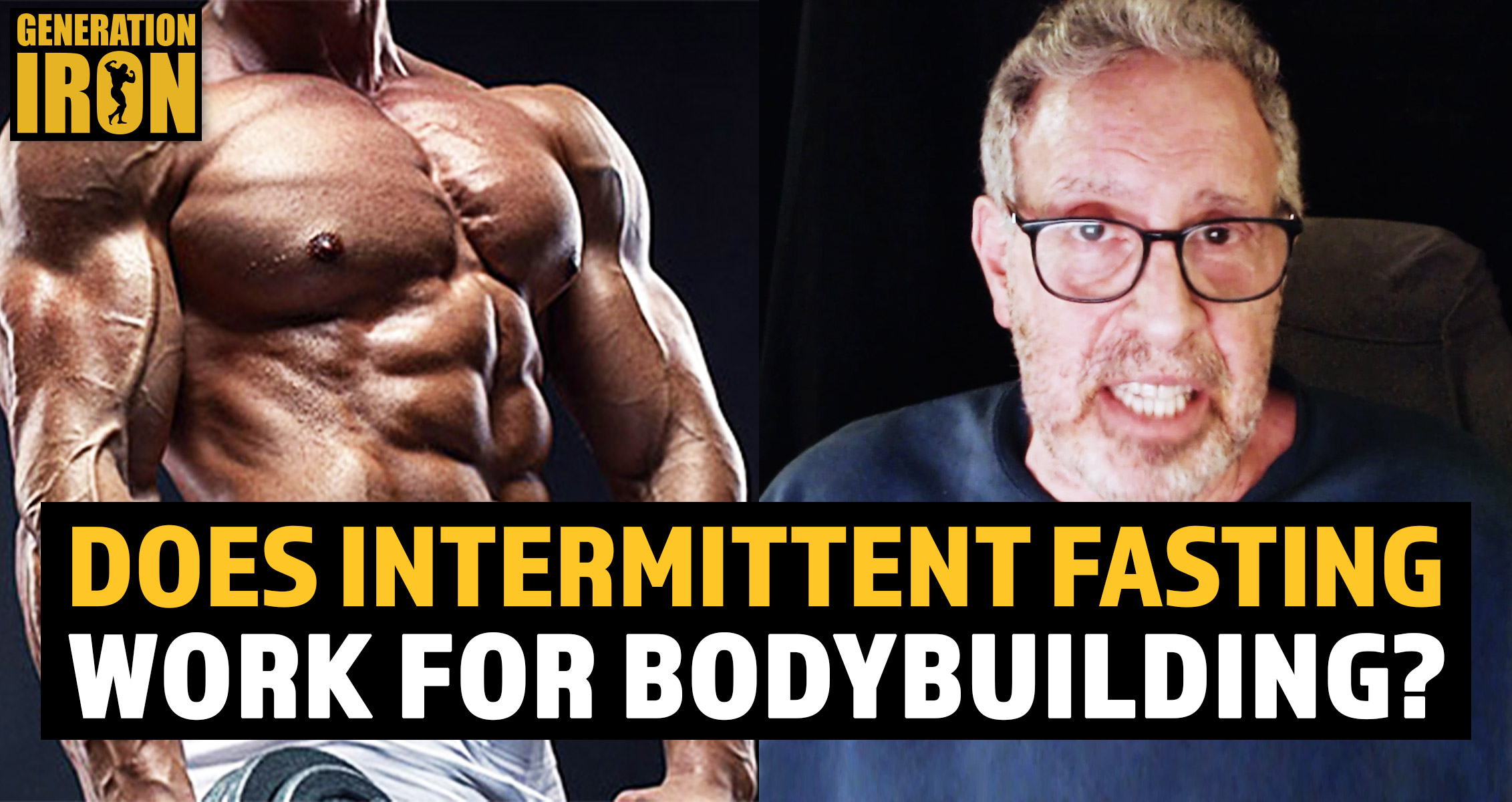
Straight Facts: Is Intermittent Fasting Effective For Fat Loss? Does It Lead To Muscle Loss?
[embedded content]
Jerry Brainum breaks down the pros and cons of intermittent fasting and whether it can fit into a bodybuilding lifestyle.
Intermittent fasting is one of the most popular diet trends of the moment. Perhaps it is even more than a simple trend. The intermittent fasting diet lifestyle has been talked about for nearly a decade at this point and has failed to lose steam. But is it really a more effective way to lose weight? And more importantly for bodybuilders, can it lead to burning away muscle? In our latest episode of Straight Facts, Jerry Brainum goes into detail about the pros and cons of intermittent fasting.
Jerry Brainum has in depth knowledge about many aspects of the diet and nutrition world. He has written countless articles on both in magazine publications and in his Applied Metabolics newsletter. Yet the one he keeps seeing most people asking for is more information about intermittent fasting. That’s how popular this dieting concept has become in modern health and fitness.
Despite Jerry Brainum having already written extensively on the subject – he decided to break down this full explainer video overviewing the pros and cons about intermittent fasting. A definitive recap of his past writings for those who are interested in understanding if this diet is right for them. Let’s jump into it.
What is intermittent fasting?
Jerry Brainum explains that intermittent fasting is short term regular fasting, typically for weight loss but also containing other health benefits. This typically takes the form of fasting for a period of time between 16-48 hours in regular intervals. Not only can this tactic put you into a caloric deficit depending on which intermittent fasting strategy you choose, it’s also designed to speed up your metabolism for the periods of time you do eat food (1).
Types of intermittent fasting
Jerry Brainum details various different intermittent fasting strategies that have gained popularity over the years. Which version an individual decides upon depends on the person’s goal and also what works best for their life schedule and psychological relationship to food and eating.
Here is a quick list of the most common intermittent fasting schedules:
16/8 – This is when you fast for 16 hours and then eat your full meals within an 8 hour period. This is done every day.
2 Day Weekend Fasting – this is when you eat normally Monday through Friday. On the weekend, you limit your calorie intake to 400-500 calories.
24 Hour Fasting – This is when you skip a full 24 hour of eating, once or twice a week.
Alternating Fasting – This is when you fast for a full 24 hours, then eat normally for a day, then fast for another 24 hours. This alternates every day of the week.
Does intermittent fasting improve weight loss?
Jerry Brainum also looks into past studies conducted on intermittent fasting and weight loss. Overall, intermittent fasting is seen by the public as a much more successful way to lose weight (2). However, studies have shown that intermittent fasting rarely improves weight loss compared to “traditional” calorie restriction diets.
Despite the fact that there is no scientific weight loss benefit to intermittent fasting, Jerry Brainum points out that it can be a more effective strategy psychologically. Sticking to counting calories every day for, basically, the rest of your life is very challenging for most individuals. Depending on a person’s mindset, intermittent fasting may be an easier way to achieve the same results. Thus leading to less failure scenarios where someone relapses into old eating habits.
Does intermittent fasting lead to muscle loss?
So the biggest question for bodybuilders is whether or not intermittent fasting will lead to burning muscle on top of the fat. Bodybuilders spend the entire year building massive muscle. To lose that in an attempt to cut down and get shredded would be devastating – especially for competitive bodybuilders looking to impress on the stage.
Jerry Brainum understands this concern but ultimately debunks this myth. Intermittent fasting is too short to lead to serious muscle loss. A fasted period would need to last at least 48 hours in order for muscle degradation to occur. The typical intermittent fast usually ranges between 16 and 40 hours at a time, preventing this issue.
However, it should be noted that trying to build muscle while intermittent fasting would be challenging. This is common sense, as usually muscle growth needs a caloric surplus to help build and repair muscle after serious training each day. At best, intermittent fasting should be utilized by bodybuilders during contest prep.
Health benefits of intermittent fasting
While intermittent fasting might only have the slightest advantage for losing weight, it has a more encouraging outlook in terms of improving overall health. Jerry Brainum explains that studies have shown intermittent fasting provides about 95% of the health benefits of traditional calorie restriction. So if intermittent fasting is easier for you than traditional dieting – this might be the perfect solution to improve your overall health.
Jerry Brainum lists through a wide range of health benefits from decreasing high blood pressure (3), preventing certain metabolic conditions, and also helping to potentially prevent certain degenerative diseases such as Alzheimers and dementia (4).
Jerry Brainum also points out that certain studies have found that intermittent fasting helps with easing the downsides of aging. In fact, this is the most key benefit studies have found in an intermittent fasting diet above all else.
Wrap Up
Jerry Brainum goes into extreme detail for just over thirty minutes about nearly every aspect of intermittent fasting. How it can be beneficial for the general public but also how it might intersect with a more hardcore bodybuilding lifestyle. You can watch him go into even more detail than we discuss in this article by watching the latest episode of Straight Facts above. Make sure to stick around every Wednesday for new episodes of Straight Facts starring Jerry Brainum!
References
Patterson, R.; et al. (2017). “Metabolic Effects of Intermittent Fasting”. (source)
Welton, S.; et al. (2020). “Intermittent fasting and weight loss”. (source)
Erdem, Y.; et al. (2018). “The effect of intermittent fasting on blood pressure variability in patients with newly diagnosed hypertension or prehypertension”. (source)
Zhang, J.; et al. (2017). “Intermittent Fasting Protects against Alzheimer’s Disease Possible through Restoring Aquaporin-4 Polarity”. (source)
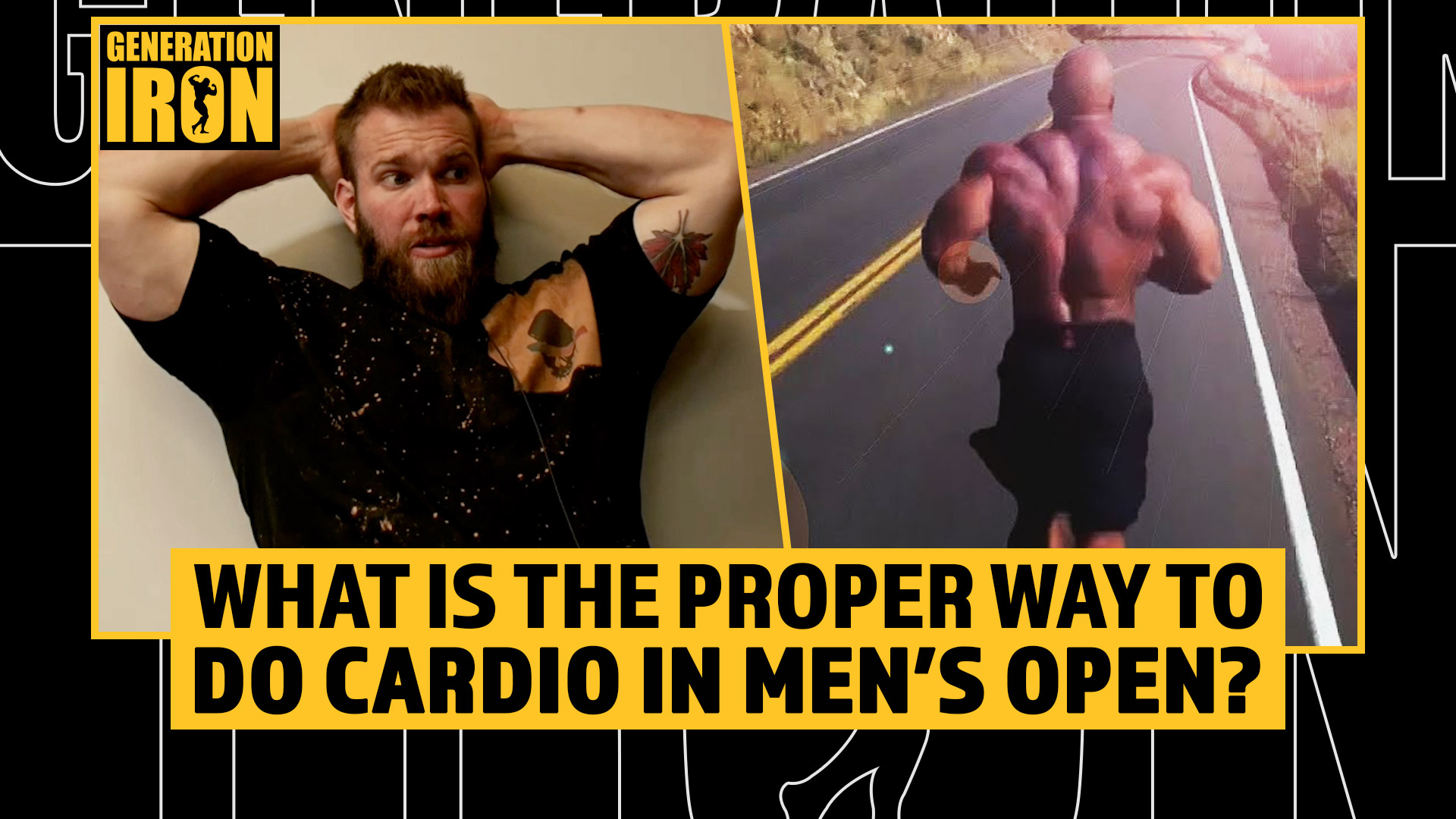
Jordan Shallow Answers: What Is Cardio’s Place In Men’s Open Bodybuilding?
[embedded content]
Jordan Shallow comments on different cardio tactics in Men’s Open Bodybuilding.
Bodybuilders hate cardio. At least, that’s the stereotype you often see within the sport. And this makes sense. Men’s Open competitors weigh in at around 250+ pounds. That’s a lot of weight, muscle or not, to move around with aerobic movement. That being said, all serious bodybuilders understand that cardio is a necessary part of training – whether they like it or not. The question is – how much cardio is too much? And how much is too little? What is the proper tactic for cardio in mass monster categories like Men’s Open bodybuilding? In our latest GI Exclusive, Jordan Shallow shares his advice on how to properly utilize cardio in a Men’s Open training program.
The biggest fear bodybuilders have about cardio is that it could burn away some of that hard earned muscle. Muscle, of course, is the key factor in sculpting a perfect physique and the lifeblood of a competitive bodybuilder’s career. However, a bodybuilder also needs to go through a cutting phase during contest prep to be as conditioned and shredded as possible on game day. Cardio is a part of that equation. On top of this, cardio has universal health benefits for your heart and lungs that should not be ignored.
So what’s the right answer here? We’ve heard of some successful pro bodybuilders who do zero cardio and others who do two hours of cardio during contest prep each day. What is the truly best tactic for including cardio into a Men’s Open bodybuilding program? The Muscle Doc Jordan Shallow gives his take on this very topic in our latest interview segment.
How to properly use cardio in a Men’s Open bodybuilding training program
Jordan Shallow believes that the days of a Men’s Open bodybuilder doing two hours of cardio during contest prep are over. The reason? Because more athletes are understanding that cardio during the offseason is not taboo but in fact vital towards building the proper core for contest prep later.
Shallow believes that a part of this shift is happening because competitors are wising up to the health risks of modern bodybuilding. Unfortunately, we had a tragic year of bodybuilding deaths in 2021 that has continued to bleed into the beginning of 2022. While we cannot directly correlate this to any specific aspect of the bodybuilding lifestyle – athletes are becoming more self aware of their health.
Jordan Shallow believes that doing three days of light cardio per week during the offseason is a huge benefit for a competitive athlete. It helps manage physical stress and also helps manage the emotional stress that comes with the competitive bodybuilding lifestyle.
Over time of building that simple cardio base during the offseason, a bodybuilder will require much less cardio during contest prep. If you combine this with thoughtful and tactical weight training that has cardio elements – you have a much more balanced training program and run less of a risk that you will burn muscle away.
Jordan Shallow points out Milos Sarcev’s giant sets as an example. Here’s what Shallow had to say in this example:
“You do a Milos giant set, that’s cardio. You’re running a marathon with your lats. You’re running a Milos lat marathon. But if you have a strong aerobic base you’ll be able to derive a more muscle building benefit in the actual duration of the set as well as have a greater toolbox to pull from to recover from that stimulus.”
Wrap Up
While Jordan Shallow is not a Men’s Open bodybuilder himself, he sees these kinds of changes happening on the inside of the industry. He believes that the taboo behind cardio is starting to lose its grip – which is beneficial for all in both terms of overall health and better contest prep.
You can watch Jordan Shallow’s full comments in our latest GI Exclusive interview segment above. He also talks about how the general public can learn to count their macros for fat loss.
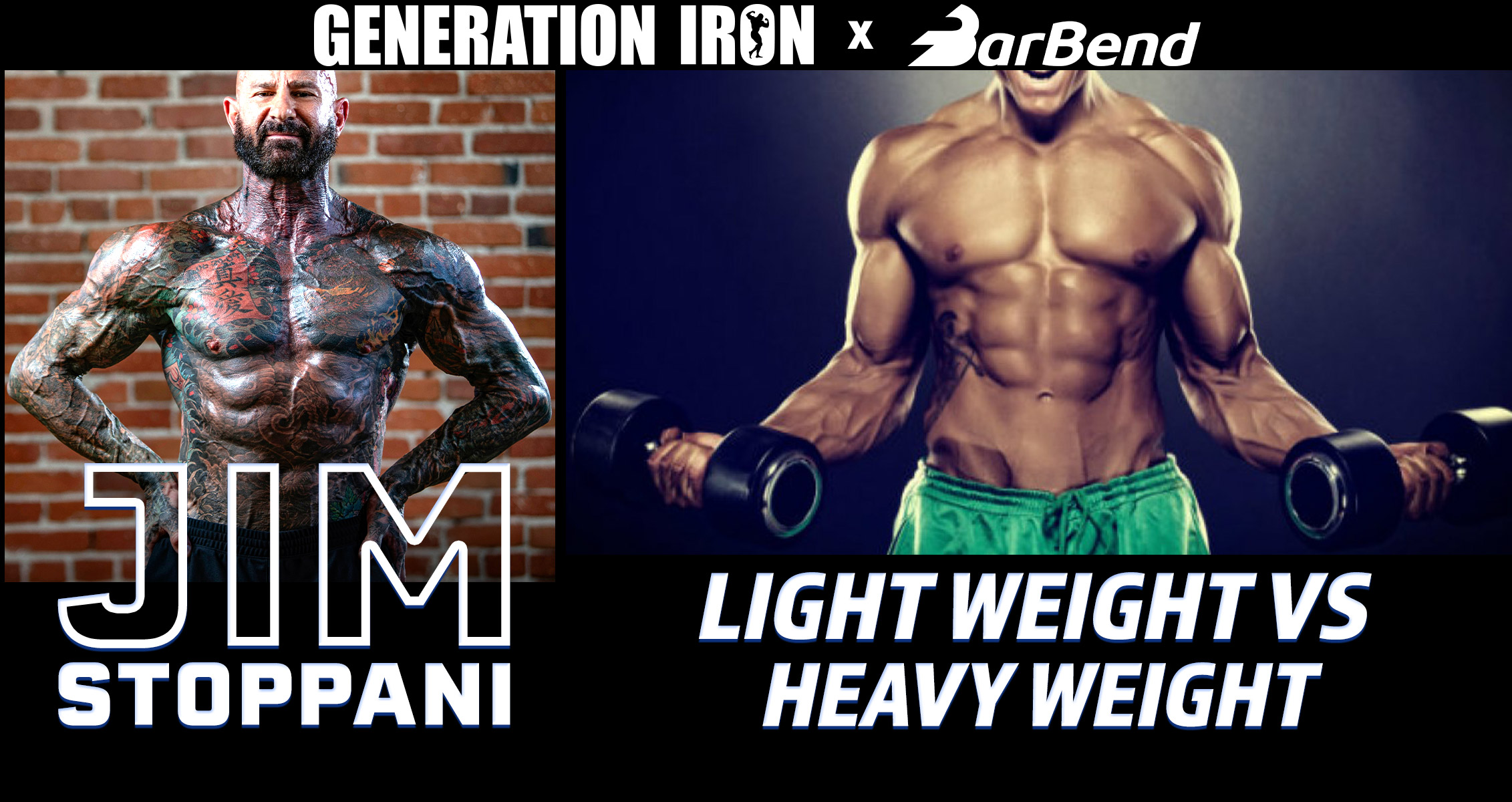
Jim Stoppani Answers: Should You Lift Light Weight Or Heavy Weight For Optimal Muscle Growth?
[embedded content]
Jim Stoppani explains the light weight vs heavy weight debate and which is best for optimal muscle growth.
For those who first start weightlifting, it might seem obvious that the more weight you lift the more muscle you gain. But that’s not necessarily true. There are various ways to build muscle and in today’s age of exercise science the tactics have become even more varied. But in the bodybuilding world, the biggest debate often comes down to light weight vs heavy weight. Aka – do you lift light weight with high reps or heavy weight and low reps? Both tactics are used by successful pro bodybuilders – proving their validity. But is one truly better than the other? In our latest GI Exclusive, Jim Stoppani explains the light weight vs heavy weight debate and breaks down which is best for ultimate muscle growth.
For those who love bodybuilding and weightlifting, there is nothing more exciting than seeing someone lift an insane amount of weight (or performing it yourself). It’s the ultimate proof of your ability in the gym. A showcase of just how strong you’ve become with your years of training. From an outward glance, it then seems that lifting hardcore heavyweight is the most inspiring and motivational tactic a bodybuilder can commit to.
However, other bodybuilders have shown time and time again that light weight can be an effective tactic as well. Dexter Jackson, for example, is a former Mr. Olympia champion and also the most decorated bodybuilder in the history of the sport. He has always promoted light weightlifting at high reps over heavy weight. In fact, he claims it is the reason he was able to continue his pro career into his 50s.
So what’s the science behind this? Can we scientifically prove that one style of training is more effective than the other? We turned to Jim Stoppani to help answer the question.
Comparing muscle protein synthesis of light weight vs heavy weight
Jim Stoppani starts off by mentioning and study that compared two lifting tactics. One group of individuals lifted 30 reps of light weight. The other group lifted five reps of heavy weight. The study was focusing on muscle protein synthesis – a key factor in muscle growth.
What the study concluded, Jim Stoppani explains, is that both groups achieved the same amount of protein synthesis. But there was a catch. This was only true if the individual trained to failure. This study further cements the statements made previously on Straight Facts by Jerry Brainum. Particularly for lifting light weight, training to failure is necessary for optimal muscle growth.
This is easier said than done. Many individuals who lift light weight at high reps often believe they are hitting failure but are actually missing the mark. The mind is very powerful and can psych a person out from achieving the true limit of their strength abilities. More often than not, those who struggle building mass muscle with lightweight tactics simply aren’t training to failure enough.
So does this mean light weight and heavy weight training are equal?
With this study, it seems that training light weight or heavy weight comes down to personal preference – as it yields the same results. Jim Stoppani points out that this isn’t necessarily true. Stoppani explains that protein synthesis is not the only factor in muscle growth.
For example, Jim Stoppani explains how lifting heavier weight leads to increased strength. That increased strength allows for lifting even more weight. This all compounds to allow for increased muscle growth. This is like compound investing in the stock market rather than paying the same regular payment into a savings account.
On the flip side, Jim Stoppani explains how light weight at high reps is more effective at increasing blood flow. This bring more nutrients to the muscle – which helps bring benefits towards increased muscle growth.
Conclusion: combine light weight and heavy weight for best results
Ultimately, this is why Jim Stoppani always recommends a combination of both tactics. Not only does a change up to your routine every 4-6 weeks help prevent plateaus, but the mix of light weight and heavy weight will bring added benefits that would not be found in sticking only to one tactic.
Weightlifting and bodybuilding progress is never about finding one routine and sticking with it forever non-stop for the rest of your life. It requires constant variety, adaptation, and change to keep growth from plateauing.
You can watch Jim Stoppani go into full detail about light weight vs heavy weight training in our latest GI Exclusive interview segment above. Make sure to stick around each Monday for new episodes of Jim Stoppani’s explainer videos.
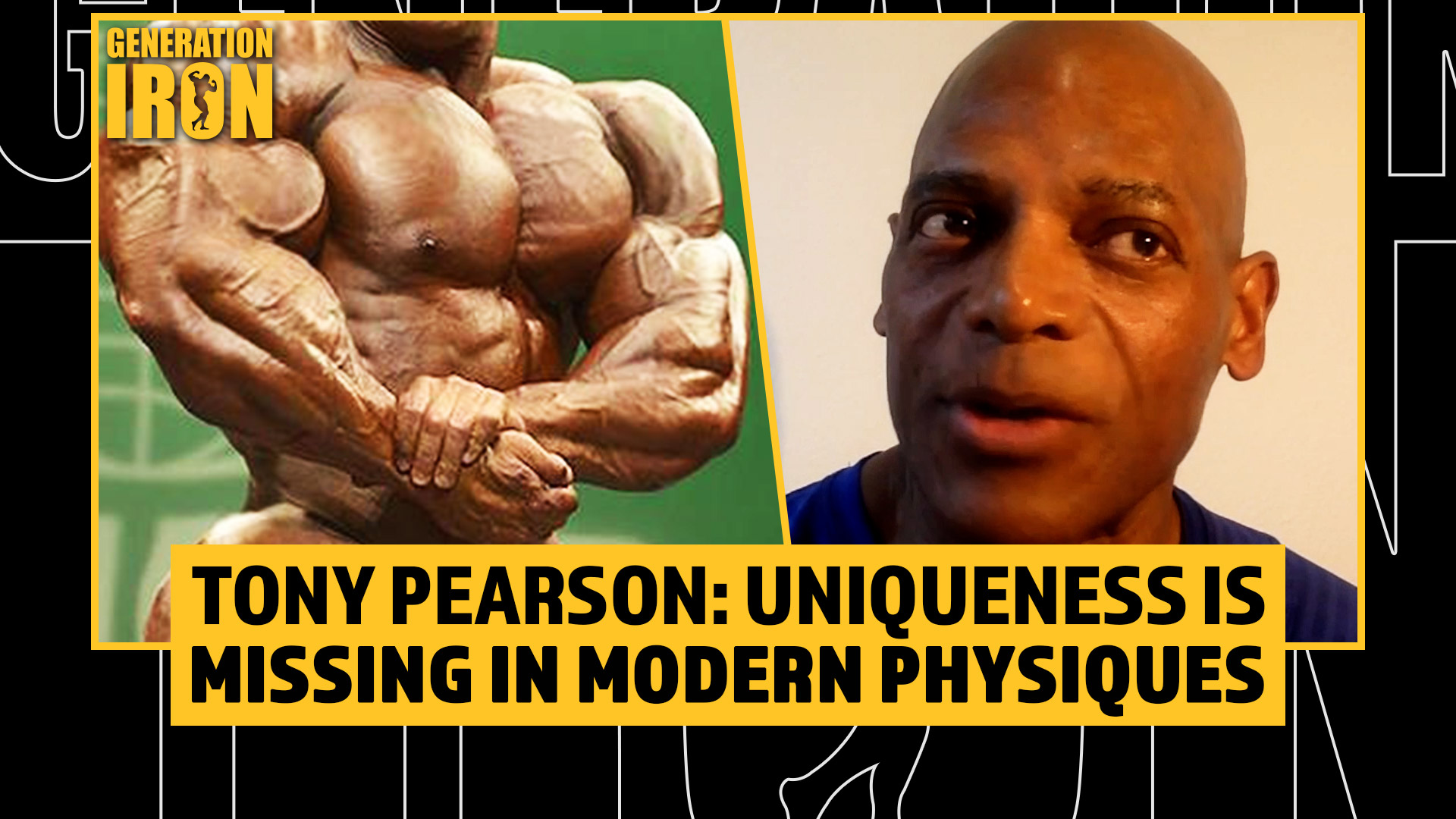
Tony Pearson: Uniqueness Is Missing From Pro Bodybuilding Physiques Today
[embedded content]
Tony Pearson picks his top 5 bodybuilders of all time and laments the lack of uniqueness in modern bodybuilding physiques.
What started as a discussion about the greatest bodybuilder physiques of all time pivoted into a conversation about modern bodybuilding vs past eras. Tony Pearson has a hard time picking the top 5 greatest bodybuilders of all time – because so many classic bodybuilding legends held truly unique physiques. It’s a kind of stamp of originality that Pearson doesn’t see as much in pro bodybuilding physiques today. In our latest GI Exclusive interview, Tony Pearson explains how uniqueness is the missing X factor in modern bodybuilding.
During our conversation with Tony Pearson, we asked him to list his top 5 favorite bodybuilding physiques of all time. He started listing off names such as Sergio Oliva, Arnold Schwarzenegger, Frank Zane, and Franco Columbu. We noticed one commonality in his list – they were all Golden Era bodybuilders with a bigger focus on aesthetics rather than mass monster size.
We pointed this out and asked him about more modern legends such as Ronnie Coleman, Dorian Yates, and Phil Heath. Tony Pearson acknowledges that they are true legends – but perhaps due to primarily competing in the 70s and 80s, Pearson has a particular taste for the more aesthetic golden era.
That being said, he also believes that the most current era of bodybuilding is missing a certain x-factor. Tony Pearson isn’t criticizing modern bodybuilding’s work ethic or skill. Rather, he believes that there is simply a lack of uniqueness in the pro bodybuilding physiques we see on stage today.
“I mean you can’t say who’s the top five because everybody is unique,” Tony Pearson states in our interview. He continues:
“And that’s what we are missing I think today – is the uniqueness of the pros. Because in those days you can cover the face and hold a picture – you know who that is. You know who’s back that is. You know who’s bicep that is. You know who’s legs those are. You know. You know’s abs. Who does that vacuum. We know. And that’s unique. You’re a unique piece of work.”
Tony Pearson goes on to mention Kai Greene, seemingly the most recent pro bodybuilder he can think of that felt unique in his physique as well as his posing. In fact, a lot of the uniqueness can also come in the form of posing. Something that the modern bodybuilders are stuck living in the shadow of from previous legends.
Tony Pearson doesn’t seem to be blaming today’s pro bodybuilders for lack of trying. When it comes to posing, modern bodybuilding simply suffers from being compared to so much that came before. He explains:
“Everyone is copying everyone else now. The guys in the Classic Physique – I can say oh that’s Shawn Ray’s pose or that’s Flex Wheeler’s pose or that’s a Zane pose. I can recognize all the poses from the old time guys”
Tony Pearson has an interesting point. There are now points of reference to other famous bodybuilders. For example, Nick Walker is often being compared to the likes of Dorian Yates and even Ronnie Coleman do to his similar humongous physique. He’s not just “Nick Walker: The One and Only.” He’s “Nick Walker: The Second Coming Of Dorian Yates.” That changes the conversation and perspective on today’s athletes.
Tony Pearson acknowledges this. “It’s hard work,” he goes on to say in our interview. It’s in some ways harder work than the older generations. The Golden Era was pioneering bodybuilding as we know it today. Is there any room left for something truly new in the sport? Or will today’s athletes always be compared in some way, shape, or form to a previous legend?
You can watch Tony Pearson go into full detail on this topic by watching our latest GI Exclusive interview segment above!
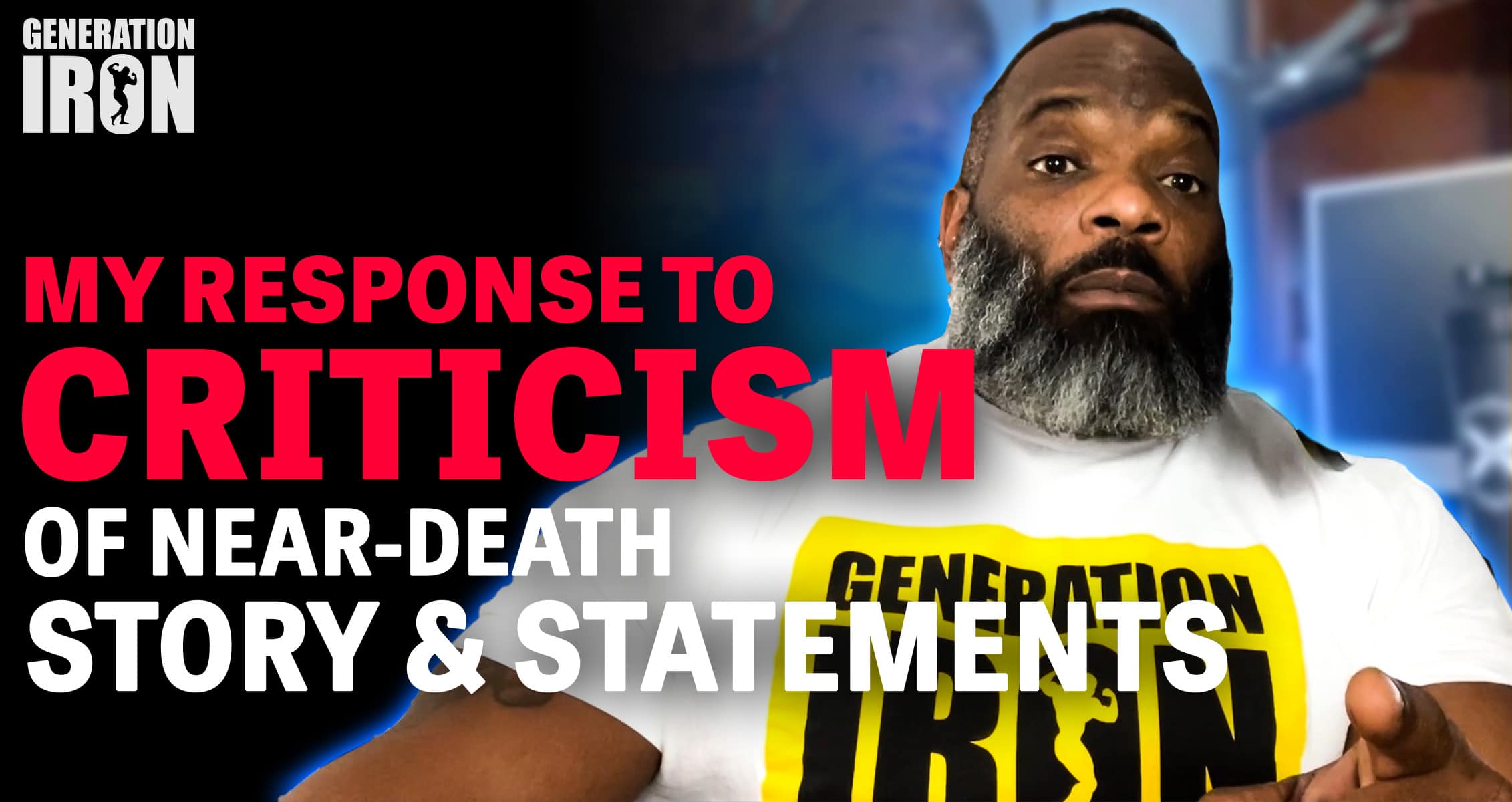
Hardcore Truth: Johnnie O. Jackson Responds To Negative Reactions Of His Near-Death Story
[embedded content]
Johnnie O. Jackson clears the air regarding negative criticism he received on the details of his near-death experience video.
Towards the beginning of March 2022, Johnnie O. Jackson released an episode of Hardcore Truth discussing his past PED use habits in bodybuilding and a near-death experience during contest prep. Shortly after posting the episode, Jackson faced negative criticism for how he explained the story and the details behind the specifics of his PED use. Admittedly, discussing PED use specifics can be a slippery slope in terms of how this kind of information is absorbed by the public. The last thing Jackson wants to do is mislead fans in the bodybuilding. That’s why on this week’s episode of Hardcore Truth, Johnnie O. Jackson responds to the negative reactions to his near-death story.
Johnnie O. Jackson decided to speak transparently about his past PED use and a near-death experience he had during contest prep. He decided to speak on this in reaction to the tragic deaths bodybuilding has faced over the past year. While we might not know the direct causes of many of those who passed away – there has been an increased discussion on health in bodybuilding.
Johnnie O. Jackson is not a doctor nor is he an expert on discussing powerful PED substances such as steroids, diuretics, etc. He wanted to share his story not as an explanation of what you should or shouldn’t do with PEDs. Rather, he wanted to simply relay the very real health risk he faced at various moments (and one moment in particular) during his prime bodybuilding years.
Generation Iron Fitness Network has always focused on providing a platform for its hosts to speak freely without censorship and oversight. Hardcore Truth, like many other video podcasts and series on our network, is hosted and distributed by GI but allows for hosts like Johnnie O. Jackson to speak unedited.
That being said, both Johnnie O. Jackson and Generation Iron understand that Jackson’s recent near-death story episode earned some negative criticism in the industry. That’s why Jackson wanted to do a follow up video to help clarify his statements and respond to the negative criticism.
Johnnie O. Jackson’s response to negative criticism
In this episode, Jackson first clarifies that his story is not meant to be direct advice about any specific drug or protocol. He is not a doctor, and he understands that he may have not explained his situation in as much detail as a medical professional could. Jackson’s story is not advice on do’s and don’ts about drugs. It was advice about the bigger picture of health risks in bodybuilding. He explains it was a story to help warn others on how easy the drive to succeed can overpower smart thinking when it comes to health.
And most importantly, he urges viewers to always second guess what is being put into your body and don’t just blindly follow trainers or coaches – including himself. Seek a professional opinion. Do research. Know what you are getting yourself into.
Johnnie O. Jackson then brings on a video clip from a medical professional to help further explain some details on his previous statements. Dawn Thornhill is a nurse practitioner – but more than that she was the specific medical professional that was overseeing Jackson’s protocols from his previous story.
In the clip, Thornhill focuses specifically on Johnnie O. Jackson’s comments about testosterone, high blood pressure, and how it affects African Americans. She pulls on her professional experience to help clear the air and clarify in more detail on Jackson’s previous statements on the matter.
Ultimately, Johnnie O. Jackson understands that criticism is simply a part of being a public figure. He also understands that others are entitled to their reactions and opinions just as much as himself. He hopes that today’s episode helps bring clarity and more context to the situation.
You can watch Johnnie O. Jackson go into complete detail alongside Dawn Thornhill in our latest episode of Hardcore Truth above. Make sure to stick around every Thursday for new episodes!
